Marketing

Starbucks marketing communication mix consists of communication channels to communicate the marketing message to the target customer segment. The most popular channels discussed below are print and media advertising, sales promotions, events and experiences, public relations and direct marketing. Starbucks Print and Media Advertising Starbucks advertising expenses totalled USD305.1 million, USD258.8 million and USD245.7 million in fiscal 2021, 2020 and 2019, respectively.[1] Print and media advertising represents the core of Starbucks marketing strategy and advertisements attempt to associate Starbucks brand with the superior quality and pleasing experience. Accordingly, messages communicated by Starbucks to the target customer segment via print and media advertising include the following: “Beware of Cheater Coffee. It Comes with a Price” “If Your Coffee Isn’t Perfect, We’ll Make It Over. If It’s Still Not Perfect Make Sure You Are in a Starbucks” “Starbucks or Nothing. Because Compromise Leaves Really Bad Aftertaste” Starbuck began to use social media and viral marketing much earlier than the majority of its competitors with the positive implications on the volume of its sales. Starbucks large social media campaign was launched back in 2009, when US-based customers were offered a free pastry via social media if they purchased a drink before 10:30 am. The marketing initiative announced via social media attracted about one million customers.[2] Noteworthy social media marketing campaigns launched by Starbucks include tweet @tweetacoffee, Blonde Roast, Pumpkin Latte, #TreatReceipt and others. Moreover, social media is adapted by Starbucks as an effective communication channel with customers to develop new products taking into account customer preferences and opinions. The global coffeehouse chain also uses celebrity endorsement as part of its print and media advertising extensively. The list of celebrities who promoted Starbucks include, but not limited to Taylor Swift, Ariana Grande, Rocky Lynch, Jamie Grace, Idina Menzel and Michael Bubble. Starbucks Sales…

Starbucks 7Ps of marketing comprises elements of the marketing mix that consists of product, place, price, promotion, process, people and physical evidence as discussed below in more details. Product Element in Starbucks Marketing Mix (Starbucks 7Ps of Marketing) Starbucks sells coffee, tea and other beverages and a variety of fresh food items, including snack. In addition to its flagship Starbucks Coffee brand, the company sells products and services under the following brands: Teavana, Seattle’s Best Coffee, Evolution Fresh, Ethos, Starbucks Reserve and Princi. The global coffeehouse chain also sells merchandise products such as coffee- and tea-brewing equipment, Verismo® System by Starbucks, mugs and accessories, packaged goods, books and gifts. Starbucks products are known for high quality. Coffee is the main product sold by company and it sells more than 30 blends and single-origin premium coffees. Place Element in Starbucks Marketing Mix (Starbucks 7Ps of Marketing) Starbucks operates in 84 markets globally and its products can be purchased from the following places: 1. Company-operated stores. There were 17133 company-operated stores, which accounts for about 51% of total numbers of stores by the end of fiscal 2021.[1] Almost all company-operated stores are leased. Starbucks company-operated stores are usually located at high-traffic, high-visibility locations 2. Licensed stores. There were 16700 licensed Starbucks stores by the end of fiscal year 2021, representing about 49% of total numbers of stores.[2] The world’s largest coffeehouse chain offers customers the possibility to order online or through mobile app. Customers can explore the menu, customize their order according to their tastes and preferences and find nearest store location to collect their order. 3. Grocery and foodservice accounts. The world’s largest coffee retailer also sells its products via global leading supermarket chains such as Walmart, Tesco, Sainsbury’s and others. Only the most popular products such as Starbucks Espresso…
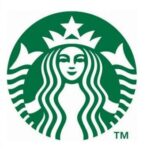
Starbucks segmentation, targeting and positioning comprise marketing decisions directed at identifying appropriate group of people among the general public as future customers for the business and targeting this segment via positioning products and services that resonates well with their needs and wants. In simple terms, segmentation, targeting and positioning refers to deciding whom to sell to, and positioning products and services accordingly. Starbucks Coffee uses the following types of positioning: – Mono segment positioning. The coffee chain giant targets premium customer segment only i.e. individuals who are willing to pay extra for the quality of products and services. – Adaptive positioning. Due to the tendency of increasing consumer health awareness, Starbucks Coffee developed coffee beverages with less calories such as Chai Tea Latte (103 calories) Caffe Misto (63 calories) and Iced Americano (11 calories). – Standby positioning. Certain Starbucks beverages such as Frappuchino had to await changes in the market for certain period of time to find demand. – Sustainability positioning. The world’s largest coffeehouse chain attempts to shift customer attention to sustainability aspect of its business. For example, by the end of FY21 there were 2779 Greener Store framework Starbucks branches[1]. This store format aims to achieve reductions in carbon emissions, water usage and landfill waste. The following table illustrates Starbucks segmentation, targeting and positioning: Type of segmentation Segmentation criteria Starbucks target customer segment Geographic Region US, Canada, Latin America, Europe, Middle East, Africa, China and Asia Pacific region Density Urban Demographic Age 18 – 60 Gender Males & Females Life-cycle stage Bachelor Stage young, single people not living at home Newly Married Couples young, no children Full Nest I youngest child under six Full Nest II youngest child six or over Full Nest III older married couples with dependent children Occupation Students, employees, professionals Behavioral Degree of loyalty ‘Hard core loyals’…

Starbucks marketing strategy is based on the following principles: 1. Focus on product and place elements of the marketing mix. Marketing mix comprises 7 elements – product, place, price, promotion, process, people and physical evidence. Businesses choose to concentrate on one or two elements as their sources of competitive advantage according to their business strategy. Accordingly, Starbucks marketing mix focuses on product element through offering foods and beverages of high quality and providing respective level of service. Place element of the marketing mix represents an additional source of Starbucks competitive advantage in a way that stores are usually located at high-traffic, high-visibility locations. 2. Customer segmentation and targeting premium customer segment. The world’s largest coffee retailer targets males and females from middle and upper class who can afford expensive prices of Starbuck products for regular consumption. The company uses mono-segment, adaptive and standby product positioning techniques in order to appeal to the needs and wants of the target customer segment. 3. Integrated application of multiple marketing communication channels. Starbucks marketing communications mix utilises a number of marketing communications channels such as print and media advertising, sales promotions, events and experiences, public relations and direct marketing in an integrated manner to communicate the marketing message to the target customer segment. 4. Consistent increase of the marketing budget to implement the above measures and initiatives. Starbucks has been consistently increasing its marketing budget for a number of years. Starbucks marketing expenses totalled USD305.1 million, USD258.8 million and USD245.7 million in fiscal 2021, 2020 and 2019, respectively. The Seattle-based coffee chain spends this budget to communicate its marketing message to the target customer segment in creative ways. 5. Extensive use of celebrity endorsements. Efficient use of celebrity endorsement is one of the cornerstones of Starbucks marketing strategy. The world’s largest coffeehouse chain…
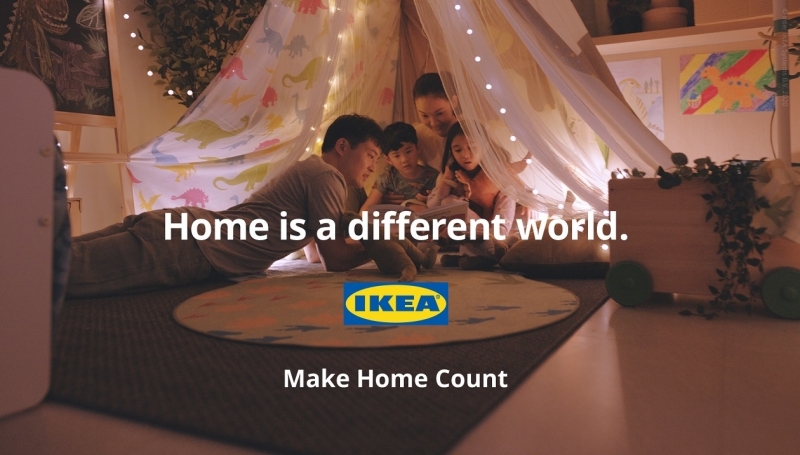
IKEA marketing communication mix integrates the application of individual marketing communication channels such as print and media advertising, sales promotions, events and experiences, public relations and direct marketing. The extent and patterns of usage of these marketing communication channels by the furniture retailer is discussed below. IKEA Print and Media Advertising IKEA relies on print and media advertising as one of its main marketing strategies to deliver its marketing message to the target customer segment. The company collaborates with a range of popular journals, magazines and TV channels globally for this purpose. The home improvement and furnishing chain has effectively integrated the elements of creativity in its print and media advertising a number of times. For example, billboard-fitted wardrobes were placed by IKEA in selected outdoor locations in Vienna. People passing by were encouraged to slide its door open to assess IKEA’s solutions to fit many items into the wardrobe.[1] In another instance, the Swedish furniture chain developed a print ad that is designed to put customers to sleep. Specifically, ‘Somnig’ is printed with lavender ink and emits white noise through a speaker. Customers are encouraged to tear it out of IKEA magazine and place next to their bed to have a good night’s sleep.[2] Another noteworthy instance of application of creativity in print advertising by IKEA relates to the publication of its more than 200 million catalogues in 2013. While more than two third of IKEA’s marketing budget was previously spent on furnishing living quarters for its catalogues, from 2013 onwards the company started to create images in its catalogue with the help of graphic artists. In other words, starting from 2013 images in IKEA catalogues are not photos but “a collection of pixels and polygons arranged on a computer”[3] and this shift has proved to be…
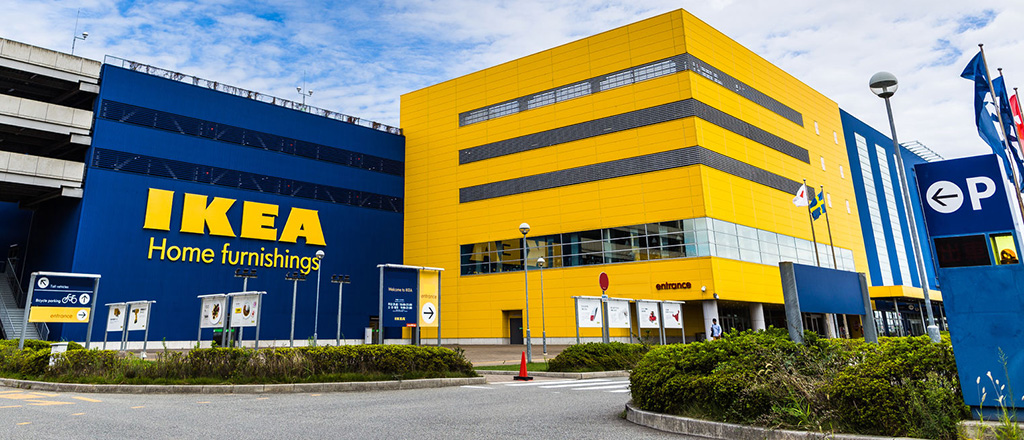
IKEA segmentation, targeting and positioning involves a set of consequent marketing decisions that constitute the core of company’s marketing strategy. Segmentation refers to dividing population into groups on the basis of their common traits and characteristics. Targeting involves choosing specific groups identified as a result of segmentation as consumers for the brand. Positioning implies the selection of the marketing mix the most attractive to the target customer segment. There are various types of positioning such as mono-segment, multi-segment, standby, anticipatory, imitative, adaptive, defensive and stop-gap types of positioning. IKEA uses the following types of product positioning: – Mono-segment positioning. This type of positioning is associated with making an appeal to the needs and wants of a single customer segment. IKEA uses mono-segment positioning via focusing on a single customer segment that are cost-conscious and prefers to get value for money. – Adaptive positioning. This positioning method is based on periodically repositioning products and services to reflect changes in customer preferences. The Swedish furniture chain takes into account dynamic nature of customer preferences in designing its products. For example, increasing popularity of minimalism in the global scale has been reflected in the latest ranges of IKEA products. – Aesthetic positioning. The world’s largest furniture retailer uses ‘democratic design’ concept to develop its products. Democratic design appeals to the needs and preferences of a specific customer segment that value balance between function, form, quality, sustainability and low price. The following Table illustrates IKEA segmentation, targeting and positioning: Type of segmentation Segmentation criteria IKEA target customer segment Geographic Region Europe, Americas, Asia & Australia, Russia. In total 11 franchisees operate in more than 500 locations Density Urban Demographic Age 18 and older Gender Males & Females Life-cycle stage Bachelor Stage young, single people not living at home Newly Married Couples young, no…
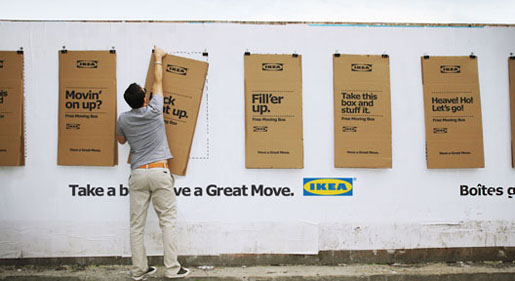
IKEA 7Ps of marketing comprises elements of the marketing mix that consists of product, place, price, promotion, process, people and physical evidence. The furniture retailer places greater emphasis on the price element of the marketing mix over other elements due to cost advantage business strategy it pursues. Product Element in IKEA Marketing Mix There are nearly 12000 products across IKEA range and the company renews its product range annually. The company develops approximately 2000 new products each year. IKEA products are designed by its in-house, as well as, contracted designers. IKEA promotes the idea of democratic design. The furniture maker adheres to the following five dimensions of democratic design: form, quality, function, sustainability and low price. IKEA products are associated with no-frills simplicity to sustain its cost leadership business strategy. Furthermore, some of IKEA products such as furniture are not assembled and ready to use by customer. Instead, the retail giant prefers to sell large furniture items as flat pack and customers have to assemble furniture themselves according to clear guidelines and illustrative instructions supplied by the company. Selling products in flat pack form immensely contributes to cost leadership business strategy because it is much cheaper to transport and store flat packs than ready assembled items. Place Element in IKEA 7Ps of Marketing IKEA has 11 franchisees operating in more than 500 locations in 63 countries.[1] The Swedish furniture chain promotes itself as a multi-channel retailer effectively integrating online and offline sales channels. Currently IKEA is concentrating on smaller city-centre stores and planning studios for kitchens, as the world’s largest furniture retailer tries to decrease its dependence on selling only through giant out-of-town warehouses. Price Element in IKEA Marketing Mix IKEA pricing strategy integrates the following: 1. Cost leadership. Competitive costs are placed at the core of…
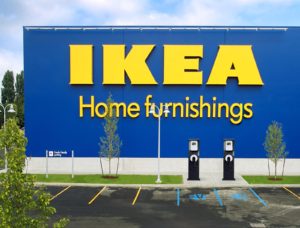
IKEA marketing strategy is based on sophisticated customer research and market research. “IKEA actually sends design experts into people’s homes to listen to their concerns and provide feedback. This allows IKEA evangelists to make marketing decisions based on people’s real-life experiences rather than just surveys or data.”[1] Accordingly, it can be argued that marketing strategy of IKEA is proactive, rather than reactive. In 2018, the world’s largest furniture retailer shifted its marketing focus from rooms to product innovation. The ‘magic’ blue bag has been placed at the core of marketing strategy of IKEA and the latest ads have been designed to illustrate how the addition of just a few innovative items can transform the home for the better. Generally, IKEA marketing strategy integrates the following: 1. Focusing on product and price elements of the marketing mix. Specifically, IKEA attempts to offer the greatest range of products for the lowest cost. Economies of scale play an instrumental role in achieving competitive prices. The Swedish furniture chain offers mixed-and-matchedproducts accommodating unique style and needs of each customer. Reusable durability is another important feature of IKEA products. Along with product and price, additional elements of marketing mix, also known as 7Ps of marketing include place, promotion, process, people and physical evidence. 2. Using mono-segment, adaptive and aesthetic types of product positioning. The furniture retailer targets cost-conscious customer segment that prefers to get value for money they pay. Accordingly, IKEA has adapted the lowest costs of its products along with the widest range as the unique selling proposition of the brand. The home improvement and furnishing chain continually adapts its products to changing customer needs and wants on the basis of its proven ‘democratic design’ concept. 3. Integrating several channels of marketing communication such as print and media advertising, sales promotions, events and experiences,…
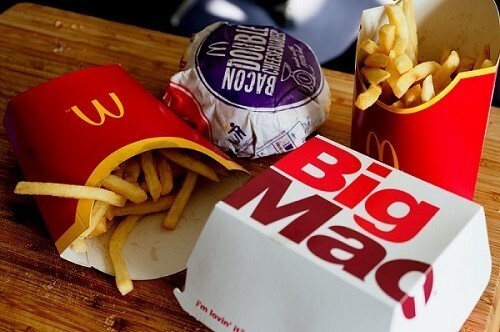
McDonald’s 7Ps of marketing comprises elements of the marketing mix that consists of product, place, price, promotion, process, people and physical evidence. Product Element in McDonald’s Marketing Mix (McDonald’s 7Ps of Marketing) McDonald’s restaurants offer a substantially uniform menu, although there are geographic variations to suit local consumer preferences and tastes. The fast food chain sells a wide range of fast food products such as hamburgers and cheeseburgers, Big Mac, Quarter Pounder with Cheese, Filet-O-Fish, several chicken sandwiches, Chicken McNuggets, wraps and french fries. The company also offers salads, oatmeal, shakes, McFlurry desserts, sundaes, soft serve cones, pies, soft drinks, coffee, McCafé beverages and other beverages.[1]Although, the company has long announced its pledge to increase the nutritional value of its meals, McDonald’s foods widely remain to be perceived as unhealthy. Place Element in McDonald’s Marketing Mix (McDonald’s 7Ps of Marketing) There are 40,031 McDonald’s restaurants in 119 countries.[2] As of December 2021 in total 37,295 stores, or 93%, were franchised. According to its aggressive expansion business strategy, the company aims to establish its presence in urban, as well as, in rural areas. The company states that “McDonald’s looks for the best locations within the marketplace to provide our customers with convenience. We build quality restaurants in neighbourhoods as well as airports, malls, tollways, and colleges at a value to our customers”.[3]. Generally, major fast food restaurants tend to cluster and in most locations, where there is a McDonald’s, there is also a Burger King right across the street.[4] Price Element in McDonald’s Marketing Mix (McDonald’s 7Ps of Marketing) McDonald’s pricing strategy comprises the following: 1. Economy pricing. McDonald’s follows cost leadership business strategy and accordingly, its foods and drinks are offered for competitive prices. The fast food chain offers customers the possibility to dine for a fraction of costs that are charged…

McDonald’s marketing strategy relies upon an extensive utilization of individual elements of the marketing communication mix. Specifically, McDonald’s marketing communication mix comprises print and media advertising, sales promotions, events and experiences, public relations and direct marketing. McDonald’s marketing and promotional efforts focus on value, quality, food taste, menu choice, nutrition, convenience and the customer experience McDonald’s Print and Media Advertising McDonald’s marketing strategy attempts to integrate the elements of creativity and uniqueness in its print and media advertising. For example, the company has launched ‘Easy Morning’ print ads with the tagline “In the morning not everything is as easy as breakfast at McDonalds”, and a humorous attempt has been made to show an appropriate time to eat burger via a print ad. McDonald’s spends considerable amount of financial resources for print and media advertising. These investments amounted to USD 82.9 million, USD 329.2 million and USD 81.5 million for 2021, 2020 and 2019 respectively. Particularly, in 2020 the fast food chain made significant investments in brand communications.[1] The company has launched some controversial marketing campaigns as well. These include commercial in UK that exploits a child’s grief over the death of his father, “Carry On,” campaign referencing public tragedies including 9/11 and the Boston Marathon bombings and others. McDonald’s viral marketing also plays an instrumental role in terms of spreading the marketing message among the members of the target customer segment. The most noteworthy McDonald’s viral marketing campaigns include “Ask McDonald’s YouTube campaign” in Canada, ‘McDonald’s GOL!’ marketing video clip that attracted more than 10 million views and others. McDonald’s Sales Promotions Sales promotion is a popular marketing technique with McDonald’s and other fast food chains. McDonald’s uses the following sales promotions techniques: Competitions. Free breakfast delivery promotion according to mobile nominations[2] Seasonal promotions. “”McPick 2,” a limited-time…
